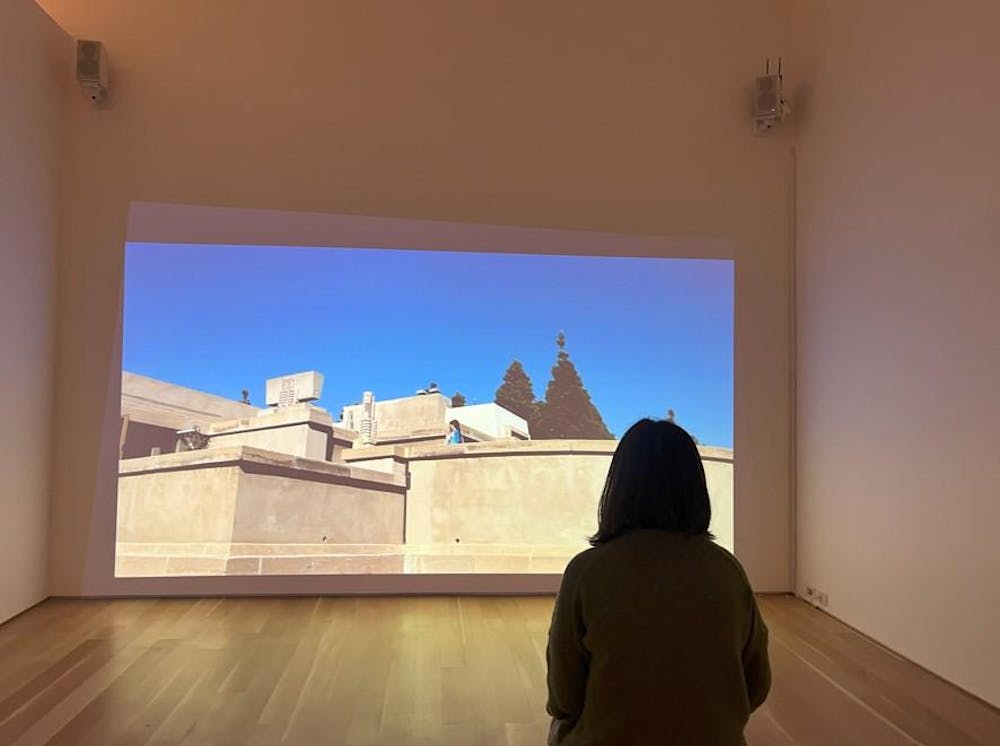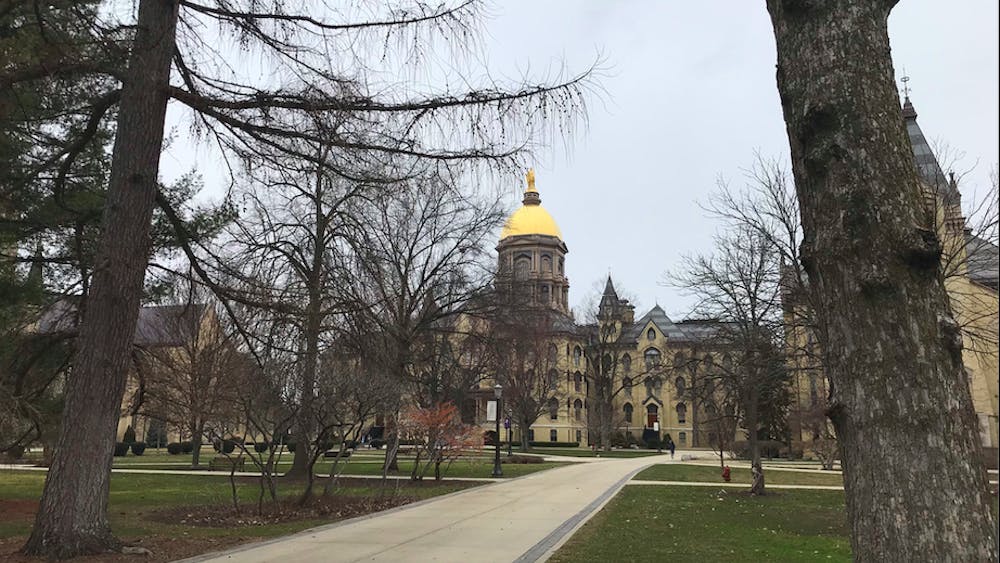My friendship with Sofia is one of those rare relationships that managed to scrape its way out of the Instagram DM. Back in 2020, we bonded over the fact that she liked making fun of Ed Sheeran. I also liked making fun of Ed Sheeran. Among our shared harassment of the English pop star, we also discovered we were both lifelong fans of Notre Dame, liked to read books and do crosswords and were both equally terrified of the transition to college. It was nice to have a “friend” going into freshman year, even if I’d never met that “friend” in person, and there was no saying if that friendship would even outlast the initial superficiality of the DM phase. But thankfully, with Sofia, it did.
Sofia works as a tour guide at the Raclin Murphy. As she showed me around the museum’s most recent exhibit — Clarissa Tossin’s “All That You Touch, You Change” — I was reminded of how lucky I am to have friends like Sofia. Friends who challenge you, who are passionate about art, language and culture. I am forever grateful that our bond survived the perfunctory stages of social media until now, our final semester in college, and that, throughout all that time, Sofia continues to teach me things.
The title of the Raclin Murphy exhibit draws from the opening lines of the novel “Parable of the Sower” by Octavia Butler. Serendipitously, this is the very book my fiction writing teacher assigned me to read over the weekend. Butler’s novel is easy to read, but dense in subject matter, centering around a fifteen-year-old girl who attempts to survive in a dystopian world. Lauren must fight against violence, political greed and climate catastrophe in an apocalyptic Los Angeles. Though it was written in the early 1990s, “Parable of the Sower” describes the present day with eerie accuracy, even predicting that in 2025, California would be destroyed by a wave of rampant fires.
Just like the novel, Tossin’s exhibit focuses on climate change, overconsumption and colonization. Her art blends the ancient with the modern, pulling from early Mayan tradition and pitting it against today’s tech giants. Tossin weaves together cardboard Amazon packaging to make a statement about waste and capitalism.
The highlight of the exhibit is “Encontro das águas” or “Meeting of Waters” — a gargantuan tapestry depicting the confluence of the Amazon and Rio Negro rivers. The piece interweaves vibrant blue and green paints with a Google satellite image of the bodies of water. By fusing technology with the natural world, Tossin asks not just how what we touch changes us, but what stains our touch might leave behind. As corporations like Google and Apple utilize the Amazon and other ecosystems for their own profit, land that once belonged to indigenous peoples is now being decimated, polluted and appropriated.
The exhibit had a lot to say, and so did Sofia. My friend did a fantastic job of navigating me through it all. As we worked our way past walls made of Tossin’s handprints and a giant sculpture of a burnt tree, I let Sofia’s passion guide me and inspire me. Everyone needs an art history friend — someone to open your mind to compositions from creatives across the world and to challenge the habits you may have (such as ordering way too much stuff online). Everyone needs someone to make them reflect on the ways in which their touch might damage the environment around them and the steps they can take to ensure we have a cleaner future.
As Sofia and I walked side by side throughout the museum, I thought of the one word that could tie together both Tossin’s exhibit, Butler’s novel and my relationship with Sofia: Change.
Change, in many ways, is a negative concept. Changes in political powers rid the Mayans and other indigenous cultures of their freedom. Change is brought about by tech giants who pollute our waters and destroy our forests. Change has already occurred, and it will keep coming.
But in some ways, change is also a hopeful concept. The protagonist in “Parable of the Sower” doesn’t believe in a god, at least not in the traditional sense. To Lauren, “God is Change,” and this change is inevitable. Change is something we can expect and rely upon. Lauren lets this change inspire her as she turns to the stars, looking past an apocalyptic Earth to space colonization. Clarissa Tossin also sees change as something we can take advantage of, encouraging Indigenous people to reclaim their land and art as the tide shifts in some governments.
I think it’s true that “All That We Touch, We Change.” Every needless Amazon package we order, every Ziploc bag we throw away, every tank of gas we waste, we touch someone somewhere, probably negatively impacting their homes. We create change through our everyday choices and in our everyday relationships. We are the sum of the people we surround ourselves with, and what they think also affects what we think. Which is why we must surround ourselves with friends like Sofia, who encourage us to think deeply and better ourselves.
I think of the ways in which I have changed since those first days Sofia slid into my DMs. I still love books and crosswords, I still love Notre Dame and I still enjoy poking fun at Ed Sheeran. But I have also been molded by my mistakes and desires. I am not afraid of change, because change has made me who I am today. I wouldn’t want to be the same person I was four years ago.
All That We Touch, We Change. But the direction of that change depends on how willing we are to learn. Tossin’s exhibit will be at the Raclin Murphy until June 1.
Gracie Eppler is a senior business analytics and English major from St. Louis, MO. Her three top three things ever to exist are '70’s music, Nutella and Smith Studio 3, where she can be found dancing. You can reach her at geppler@nd.edu.










